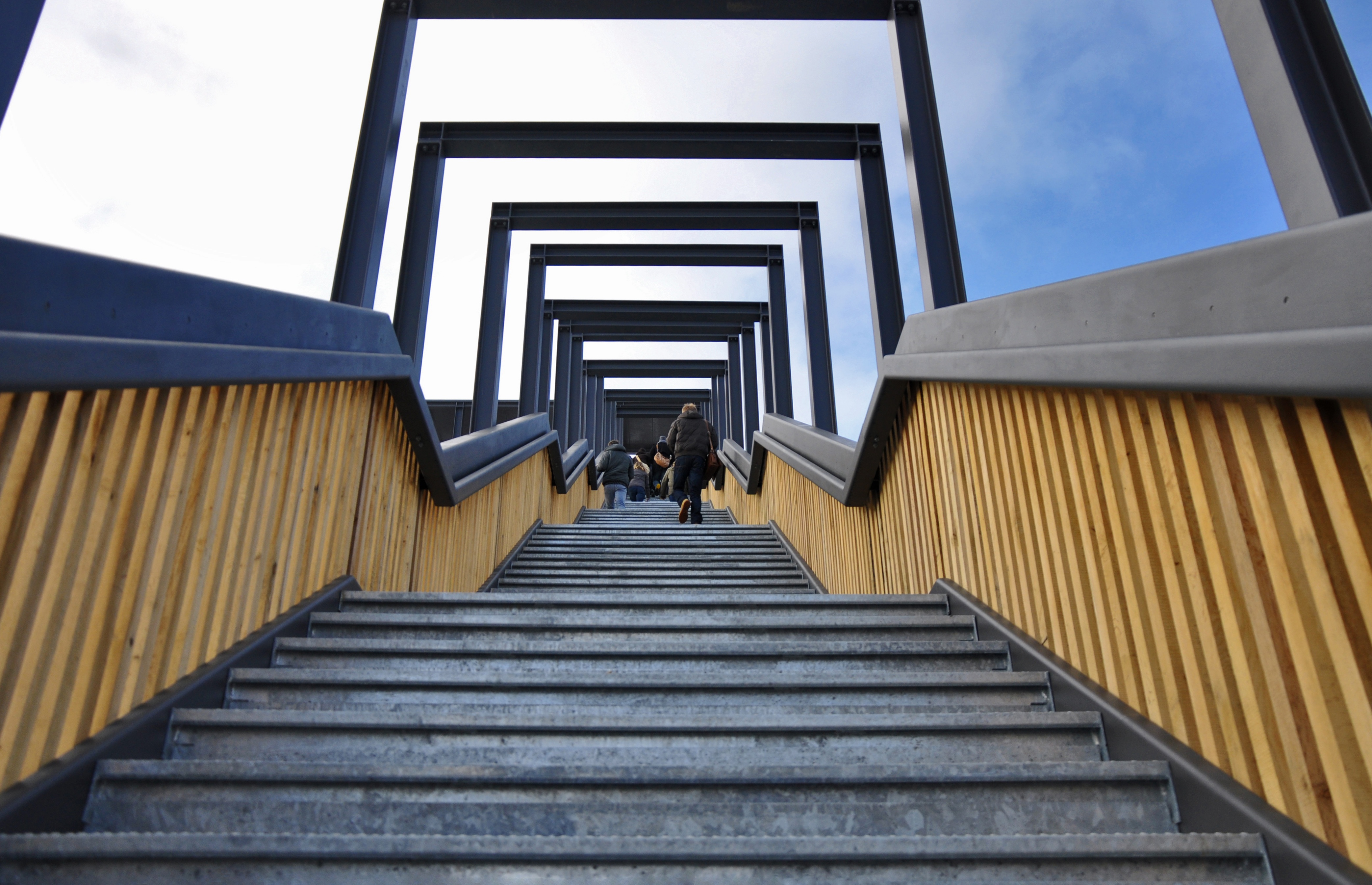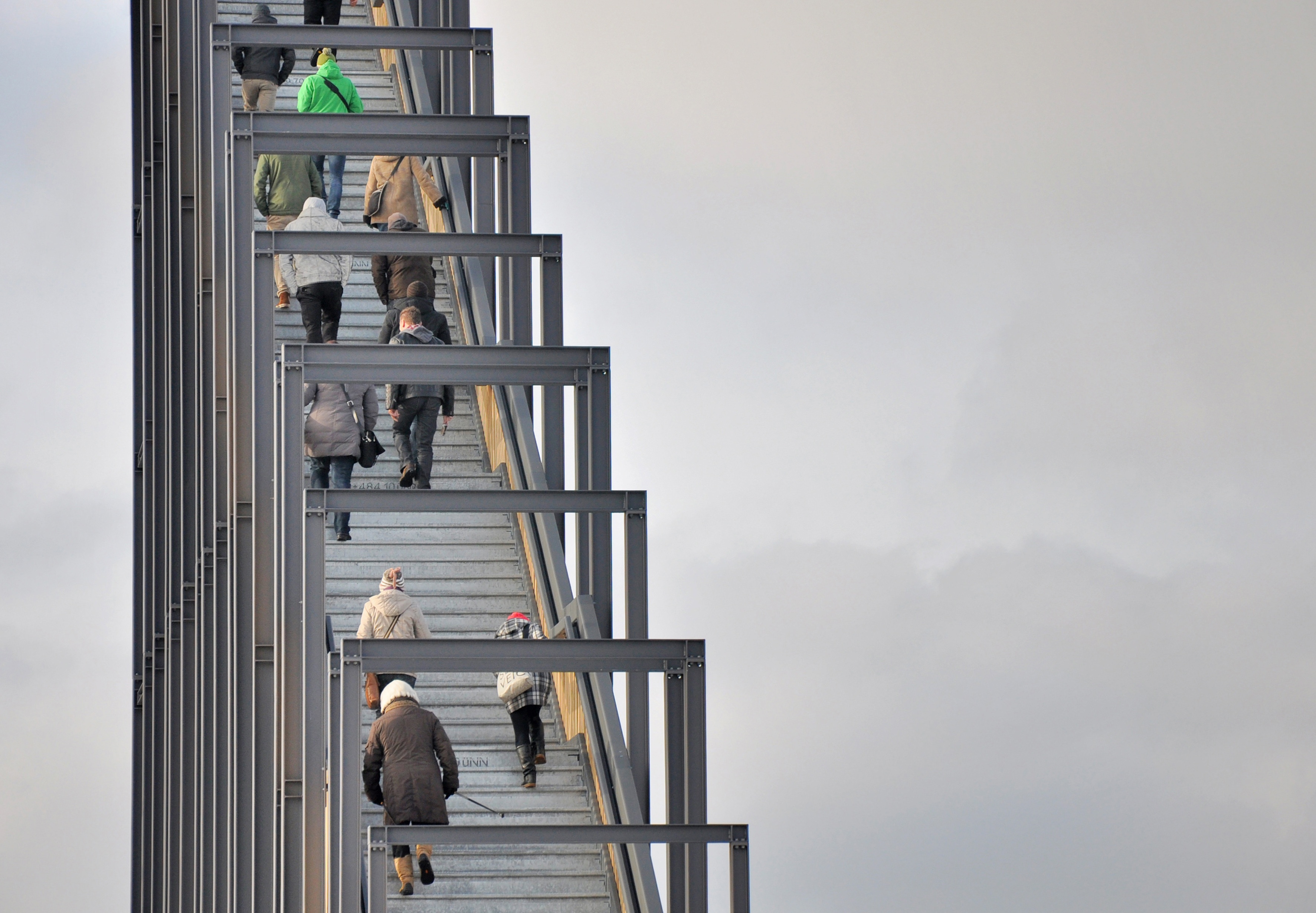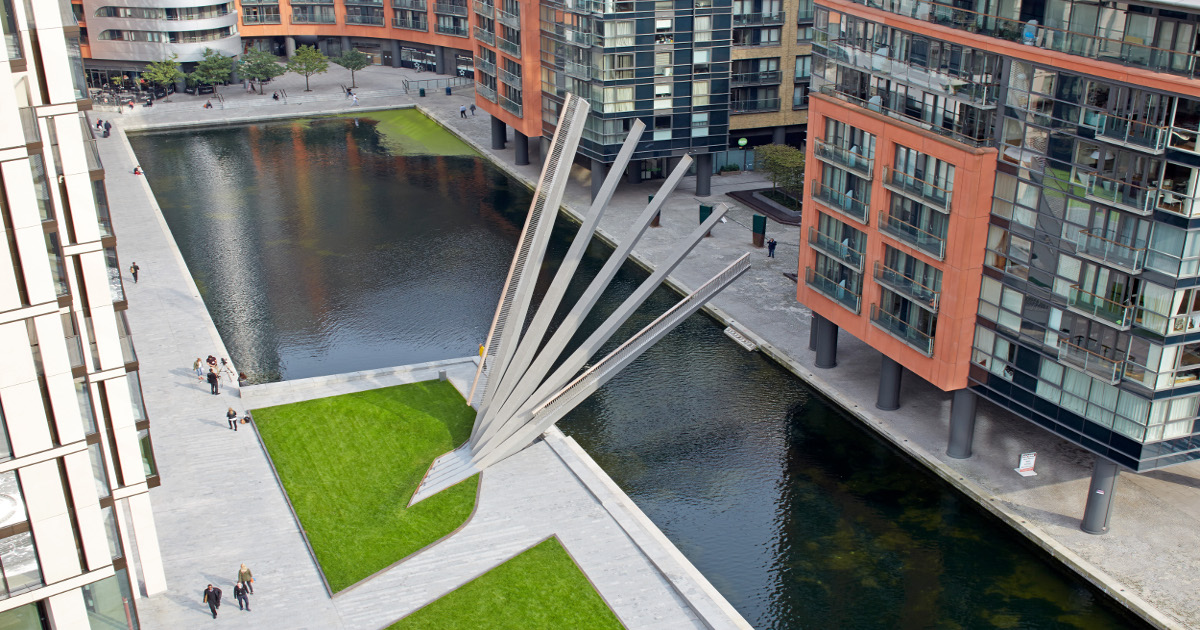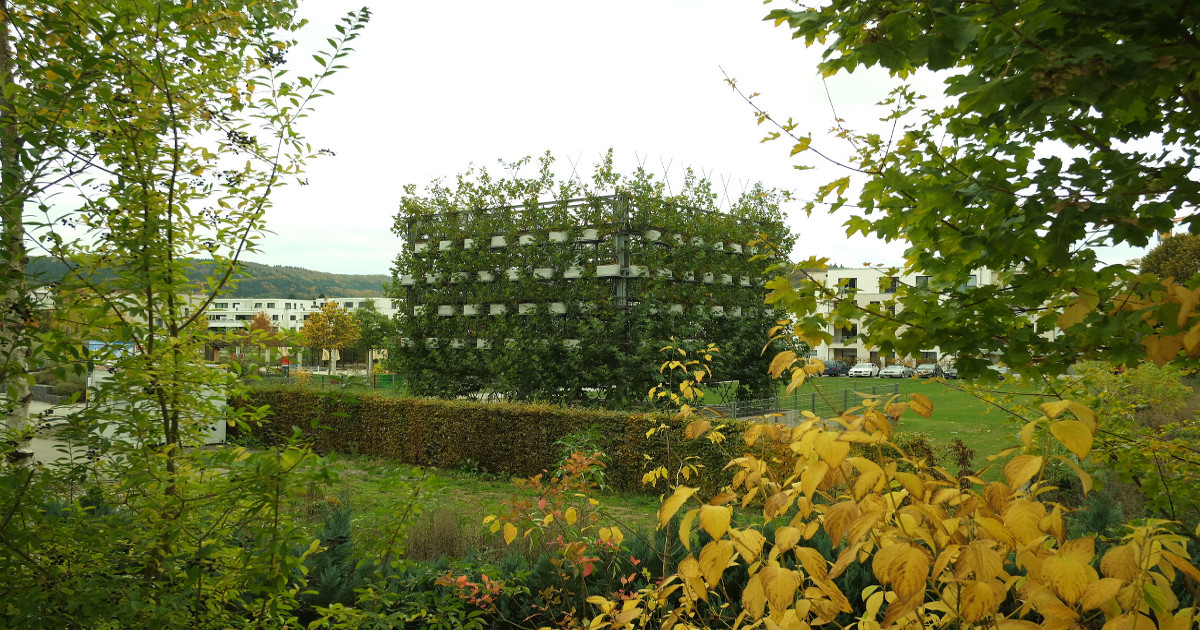The Upper Palatinate region near the German-Czech border is home to one of Germany's largest and oldest cultural landscapes: the Tirschenreuther Teichpfanne (Tirschenreuth wetlands). This ecologically important area was declared a nature reserve at the end of the 1990s in order to provide refuge for endangered animal and plant species. Since 2012, the structural eye-catcher in this water conservation area has been the "Himmelsleiter" (Stairway to Heaven), a pedestrian bridge that doubles as a viewing platform.
 © Peter Manev; Himmelsleiter
© Peter Manev; HimmelsleiterA construction project in the biotope
The first ponds in the Waldnaab wetlands nature reserve were presumably created back in the 10th century. Today there are around 2,500 ponds that attract nature enthusiasts and tourists from around the region. To reduce visitor traffic in the sensitive areas of the protected zone, the old railway line between Wiesau and Tirschenreuth was also converted into a cycling and hiking path. In 2010, the team managing the area commissioned the Heusterz Bridge to connect the Hohenwald entrance to the rest of the area. It was built by architectural firm Brückner & Brückner. Two years later, the company was awarded the contract for another construction project in the biotope: the "Himmelsleiter" (Stairway to Heaven).
Impressive bridge construction
The Himmelsleiter's design is reminiscent of a pedestrian bridge but it is not what it seems. Its actual function is not just bridging. Instead it is meant to guide visitors to a lofty height of 20 meters to give them an unimpeded view of this unique pond landscape. Its two long staircases are perfectly symmetric in their plan, running along the cycling and hiking path up to a catwalk-like covered viewing platform. This offers a wonderful panorama of the nature preserve. At the same time, visitors get a didactic introduction to the cultural and historic development of the Tirschenreuther Teichpfanne. The bridge construction also acts as a gateway over the path through which the landscape welcomes pedestrians and cyclists.
 © Marie Luisa Jünger; Himmelsleiter
© Marie Luisa Jünger; Himmelsleiter
Constructed of wood and steel
The 'Himmelsleiter' has a load-bearing construction consisting of slim galvanized steel sections that ensure maximum transparency despite the dimensions of the overall structure. Local timber then provides the non-load-bearing trim on the staircase and the viewing platform. Especially from a distance, this conveys an aged look that fits perfectly into the biotope landscape. The entire structure is made of wood and steel, materials that not only offer a sustainable and contemporary solution, but are also reminiscent of the former railway tracks.
Flawless engineering
Engineering firm Bodensteiner & Partner from Weiden in the Upper Palatinate was commissioned with the structural calculations for the Himmelsleiter. Since both companies involved in the project use Allplan, the engineers and architects were able to seamlessly coordinate their work. Data was exchanged, for example, without the usual time-consuming inaccuracies and losses in the planning stage. In addition, project participants benefited from 3D reinforcement planning. One somewhat tricky task to manage was the different support cross-sections and support axes. They were displaced continuously over the entire length of the structure and led to different tubular sizes and positions. An automatic collision and mass inspection was particularly valuable here and was then extrapolated beyond the planning stages.
 © Marie Luisa Jünger; Himmelsleiter
© Marie Luisa Jünger; Himmelsleiter
The architectural firm was given the "Best architects 15 award" and the BDA Regional Award for Lower Bavaria Upper Palatinate for the extraordinary bridge / viewing platform construction. Generally, pedestrian bridges safely bring people across to the other side of an obstacle. The Himmelsleiter does that, but also opens up a whole wonderful world to them at an impressive height.





